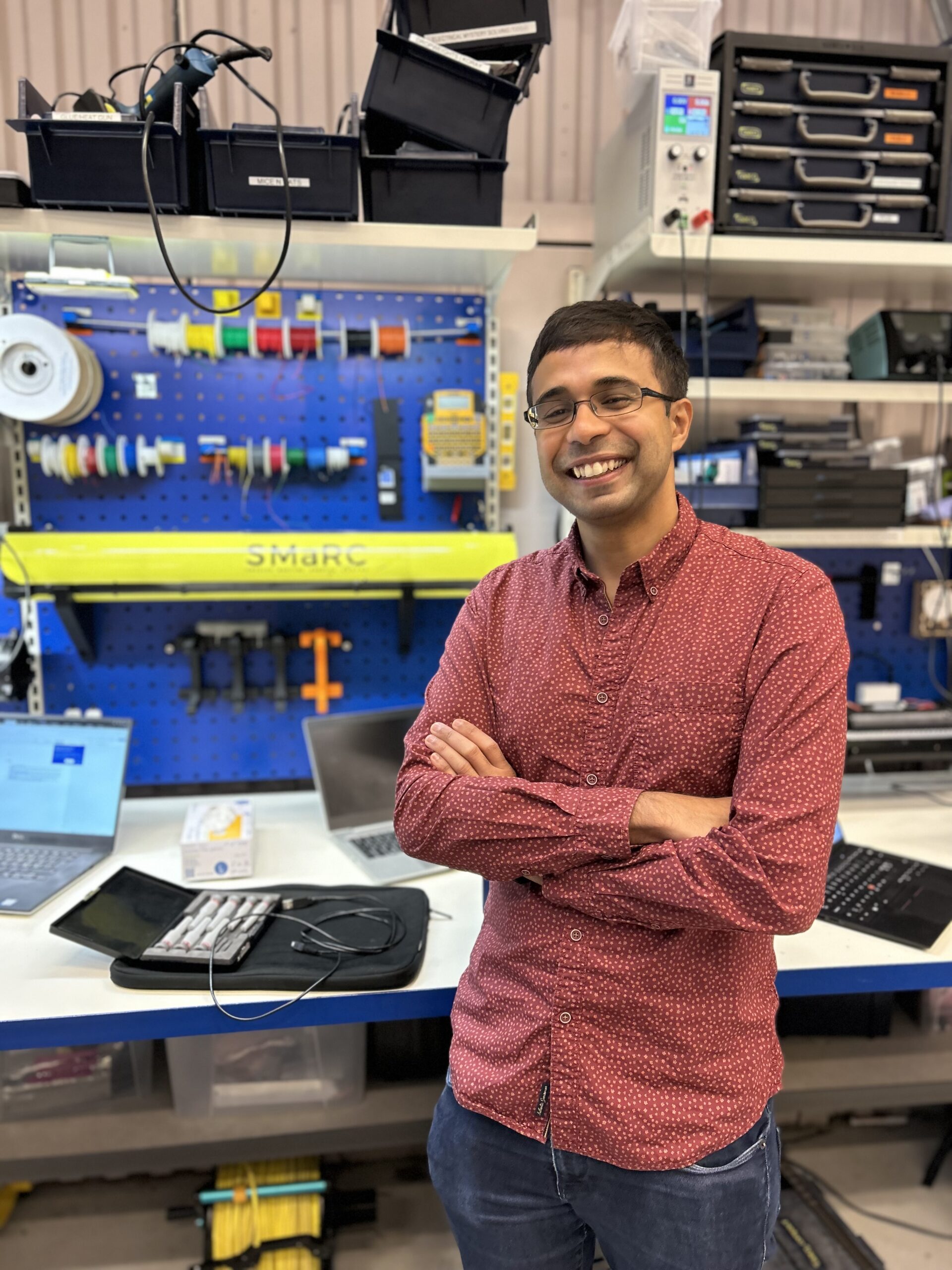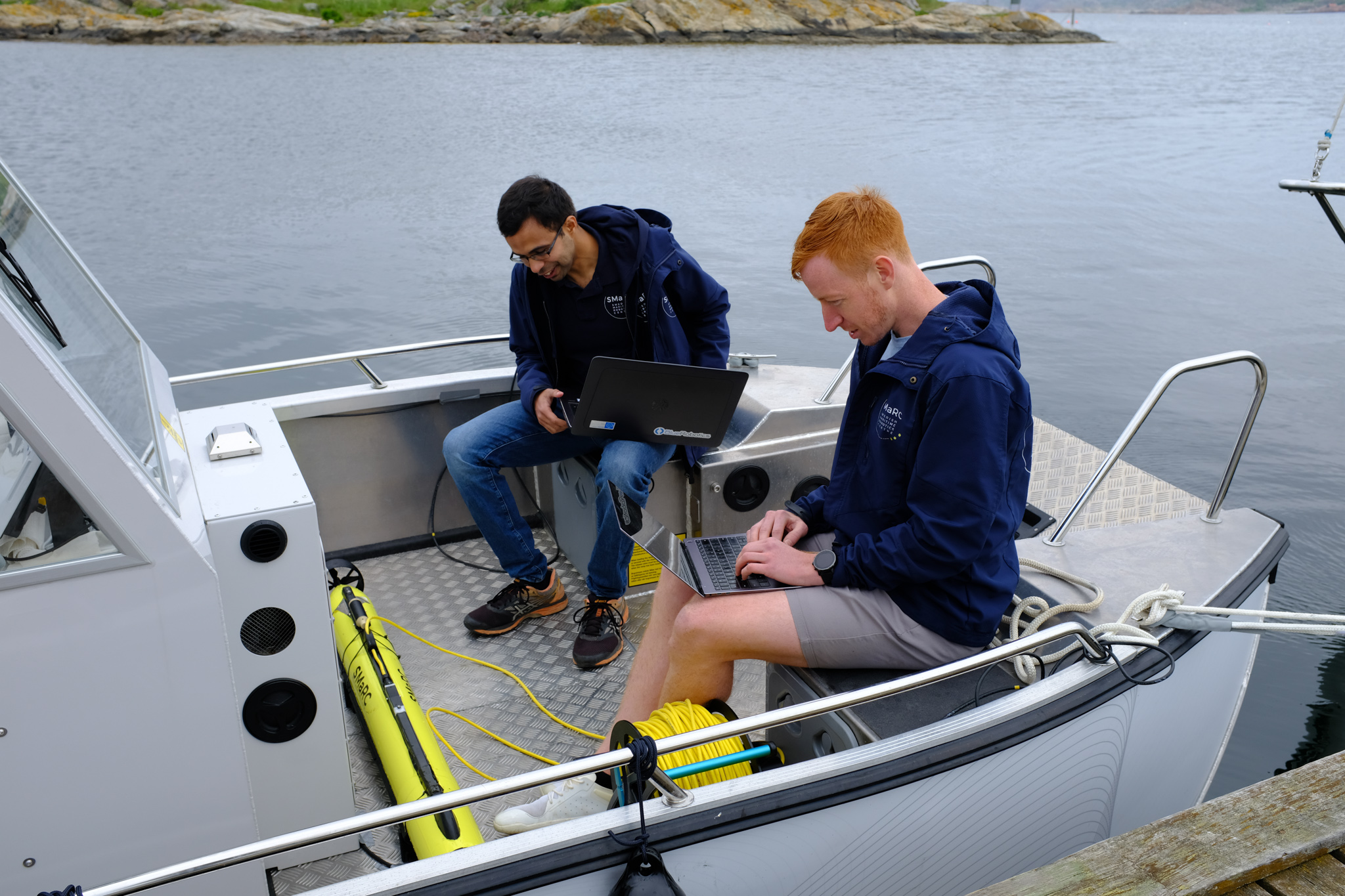Sriharsha Bhat’s PhD Journey in Underwater Robotics
Meet Sriharsha Bhat, a recent PhD graduate from SMaRC, whose fascination with ocean exploration and sustainability led him to the world of underwater robotics. In his research on hydrobatics, Bhat developed simulation models and control algorithms for autonomous underwater vehicles, opening new possibilities for real-world applications. But how did he get interested in the area, what was his main contribution, and what does his future in the field look like?
 Sriharsha, what got you interested in the research field to begin with?
Sriharsha, what got you interested in the research field to begin with?
I have been fascinated by exploring new frontiers in our oceans and I am passionate about sustainability and climate action. This got me interested in working with underwater robots in the field! With their eyes, we can see our Earth with a new perspective, and take effective action.
Can you tell us more about your PhD project?
My PhD project on hydrobatics focused on agile maneuvering underwater. I developed new simulation models and control algorithms for autonomous underwater vehicles (AUVs) so that they could perform such maneuvers, and validated these in field experiments. This research gave me a chance to learn about flight dynamics, ocean engineering, motion planning, control and system identification. I also had the opportunity to perform exciting fieldwork in challenging environments including the Swedish west coast, the Stockholm archipelago, northern Sweden and Svalbard.

What’s the most important thing you discovered?
I developed real-time simulation strategies using input from the aerospace domain. With such simulators, we can design new control strategies for underwater robots in risky and challenging applications. I also used new methods in model predictive control, hybrid systems and reinforcement learning to develop elegant controllers for hydrobatics. These can help others in our field to control their platforms in real time. To improve robustness to uncertainty, I leveraged data-driven methods to enhance models and controllers with real-world measurements. Bringing these methods to the real world as a cyber-physical system, I worked on field experiments and simulations in use cases such as seaweed farm inspections, adaptive sampling of algal blooms, glacier front sensing, underwater docking and under-ice navigation. This is still the tip of the iceberg, and there are several exciting opportunities ahead in deploying autonomous systems in our oceans.
Now that you’ve finished your PhD, what do you plan to do next within the field?
I plan to be involved long-term in underwater robotics and autonomous systems. I will work in the industry on autonomous systems and continue to develop a startup on ocean sensing in my free time. I hope to deploy intelligent AUVs in challenging applications to provide reliable and real-time ocean data to help governments and businesses address questions of sustainability, food and energy security.
Read the theses here: https://urn.kb.se/resolve?urn=urn:nbn:se:kth:diva-336526